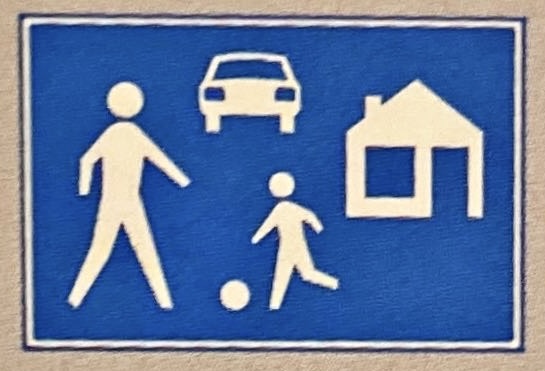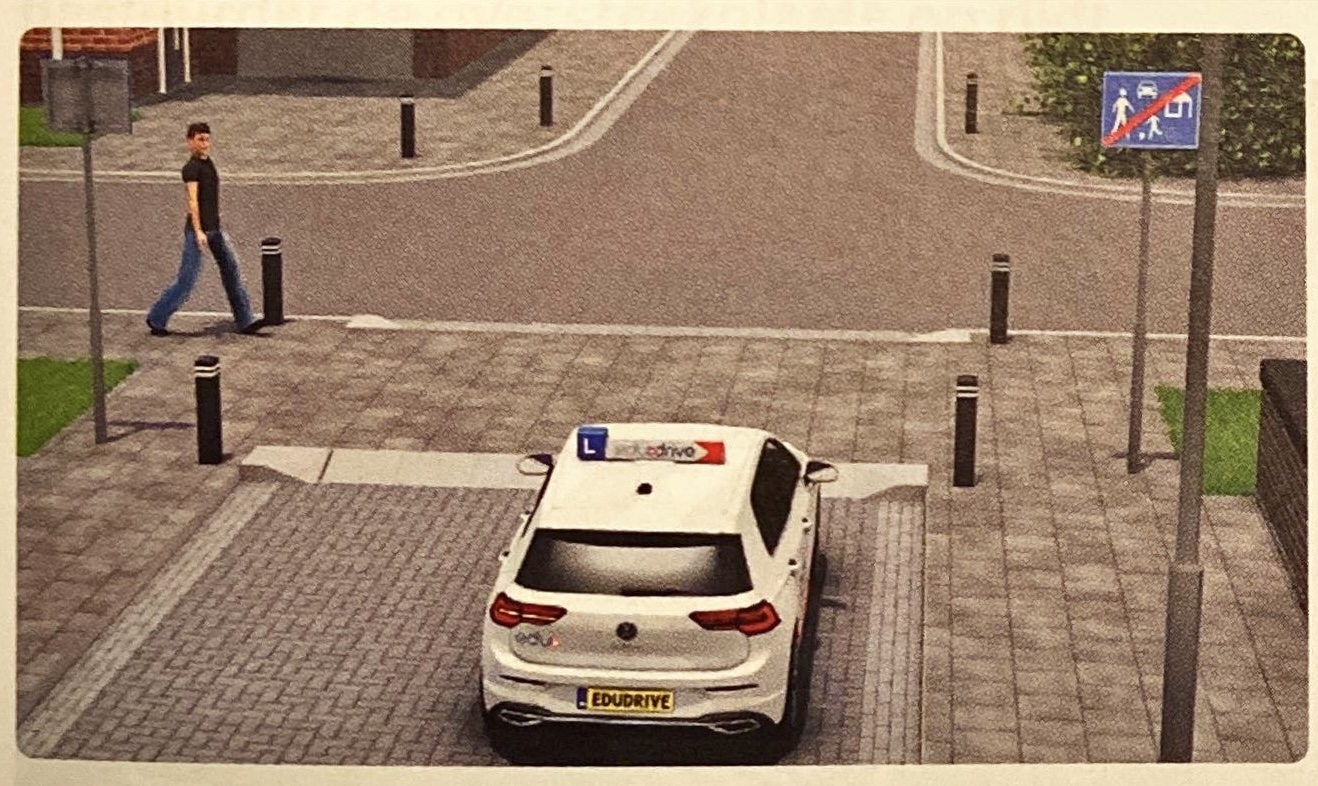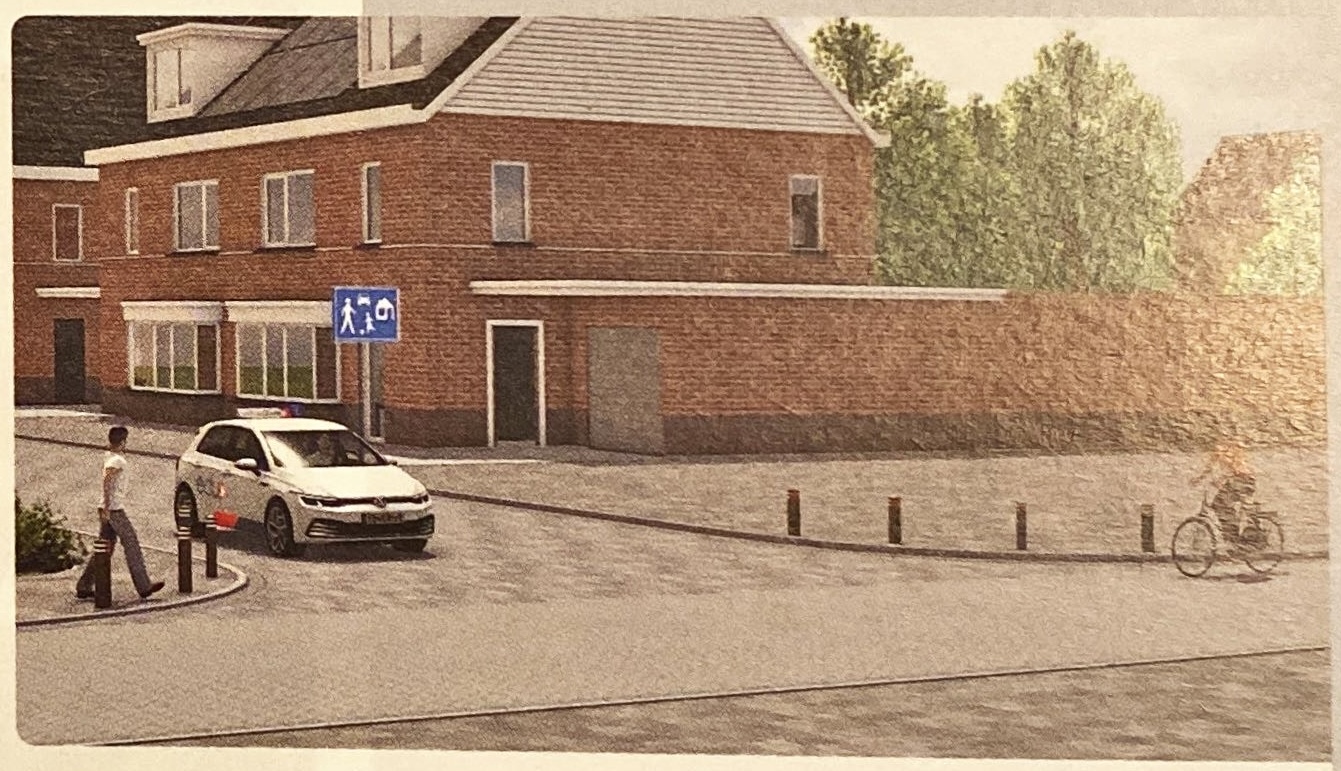Dutch: Erf. Can be translated as Home Zone
Here pedestrians take priority ‼️
A home zone is comprised of one or more streets where pedestrians and children take center stage; they are allowed to walk everywhere in the zone. There are no sidewalks, footpaths, or bike paths. Instead, you will find elements like speed bumps, flower pots, bollards, trees, benches, or playground equipment.
This unique section of public road is entirely focused on pedestrian traffic. Signs indicate where the home zone starts and ends (same sign with red line crossing).

Traffic Rules Within an Erf
- Pedestrians and playing children have the right to walk and play anywhere in the home zone.
- The maximum speed limit for drivers is 15 km/h.
- Vehicle traffic is secondary to pedestrian traffic.
- Drivers approaching from the right have priority.
Parking
Motor vehicles and microcars are only allowed to be parked in designated areas of the road.
These parking spaces are identifiable by the E4 (🅿️) sign or a white letter ‘P’ painted on the road surface.
Bicycles, scooters, and mopeds can be parked anywhere in the home zone, provided they do not cause obstruction or block passage.
Exiting an Erfe
The entrance and exit of a home zone are designed as driveway crossings.
When leaving the home zone via an exit, you must yield to all road users, including pedestrians.
Here the zone ends in the intersection, so you let the pedestrian go first.

If the home zone ends a few meters from the main road, it forms a regular intersection, and standard right-of-way rules apply.
Here the zone ends before, thus you let the bike go first (is going straight) but the pedestrian has to let you go first (no zebra crossing.)
 /
/